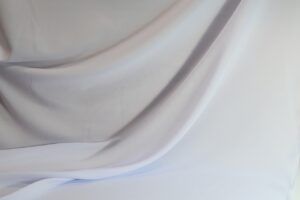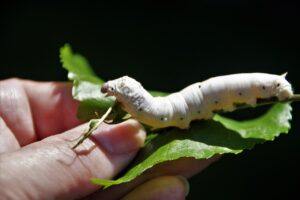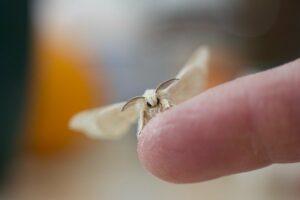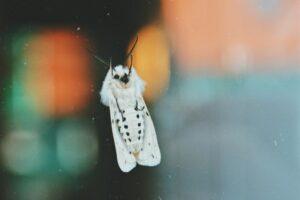Are Satin and Silk the same thing?
With names like ‘Satin Silk’ and ‘Silky Satin’ and the fact that Satin and Silk look almost the same, have you ever found yourself wondering if they are in fact, the same thing? Is one the cheaper version of the other?
Are silk and satin vegan friendly?
Well, one of them is absolutely not vegan, and the other often is, but not always.
You might have heard that vegans don’t wear silk. So, why not, and can vegans wear satin?
Here we break it down for you.
SILK
Known for its luxurious feel, super softness and lustrous sheen, silk is a fabric that is highly prized and sought after. Silk was first woven in Ancient China, some 8,500 years ago. Since then, it has been traded all across the world, (Silk Road, anyone?) and is just as popular today as it’s ever been. It is associated with opulence and elegance, making it a favourite for furnishings, drapes, wedding and formal wear, bedding and sleep wear.
Did you know that silk has even been used in medical applications? Yep, spider silk has been used for sutures, surgical meshes and wound healing in the past, and is currently a hot topic in biomedical research.
So, what exactly is silk?
Silk is essentially a protein known as fibroin. This fibroin is produced by the larvae of several species of insect, (caterpillars, spiders, wasps etc) and silkworms of course.
Although fibroin is produced by various insects, it’s really only the silk of the moth caterpillar, (Bombyx mori, the larvae of which is commonly called the silkworm and who use it to form their cocoons for metamorphosis), that is used for textile manufacturing. And, you guessed it, these larvae are bred for the purpose.
It’s excreted from the salivary glands at the side of the mouth, and the silkworms rotate themselves as they go, in a figure 8 pattern, creating their cocoon, which generally takes them around a week to complete.
It takes literally thousands of cocoons to produce a garment, (around 3000 per pound of silk), – even one silk strand is actually comprised of the thread from several cocoons. Sadly, the creatures will never re-emerge as the beautiful moths they were meant to become. The silk textile process does not allow for letting the animals transform and leave their cocoon behind, as they would have done. Unfortunately, to unravel this highly sought-after thread, the silkworms are boiled alive inside their cocoons.
The reason they are boiled is because it causes the silk to unravel in a single, continuous thread, which when woven, gives a stronger, more durable cloth. If the larvae were allowed to develop and emerge as moths, they would chew their way out of the cocoon, cutting the thread into shorter lengths. This would still be useable of course, but that would be an inconvenience to humans, and they can’t have that.
Silk is definitely not a vegan fabric.
SATIN
Is Satin just a cheaper kind of silk, perhaps of a lesser quality?
‘Satin’ is actually kind of weave pattern, so the word in fact refers to how a cloth was woven. Whereas silk is made from natural fibres, ‘Satins’ may be made from polyester, nylon, rayon, or, yes, silk threads, or blends of silk threads with other kinds of fibres. (For the purposes of this article, we are referring to satins generally as separate from silks). They are woven by machine.
The Satin weave creates a familiar lustrous shine on the outside of the fabric, but the back of the fabric or inside the garment, will be dull. This is the easiest way to tell the difference at a glance.
Because it generally uses cheaper, synthetic fibres, satin is much, much cheaper than silk.
So, what is Satin Silk?
‘Satin Silk’ could technically not be silk, (depending on how a manufacturer has decided to label their product), but it is more than likely to be silk threads, or to contain a blend of silk threads with another material such as polyester or rayon. Remember, the word ‘satin’ refers to the weave and the ‘finish’ of the final cloth, – ‘satin’ itself is not a material. The best way to be sure is to check the price and the manufacturer’s description or label. If it’s relatively cheap and the label names the fibres, then you will know what you’re looking at.
Be careful of ‘Tafetta’ too, – as this is another fabric that was traditionally made from silk threads, and now may be available woven from synthetic materials. However, blends using silk are common.
Is Satin any good for skin, and which is better – Satin or Silk pillowcases and sheets?
If you want to protect your skin, particularly the delicate skin of the face and prevent wrinkles, one of the most common beauty tips you will hear is to use silk pillowcases. This is because the fabric is so sheer that it prevents friction.
It’s the friction that causes the skin to be held in one place as you move in your sleep, pressing your face up against the material. This is what causes sleep lines, which in turn, repeated over several years, eventually set into deep wrinkles. So, if I’m not using silk, is non-silk satin any good for my skin?
Yes! Absolutely! You don’t need to miss out on the benefits of sleeping on a smooth, cool surface at night. Satin sheets and pillowcases are just as good as silk in this aspect, in that both are way better than traditional bedding materials – here’s looking at you, cotton! Satin from a non-silk source is just as comfortable, cool, smooth, and supportive of smooth, wrinkle-free skin as silk is. Satin is not very absorbent, unlike silk, which despite its extreme sheen, actually is. This is a benefit because it means that satin pillowcases won’t absorb the moisture from your skin and hair, and in the world of wrinkle-prevention, skin-hydration, e.g., maintaining moisture, is key!
As an added bonus, unlike with silk, you can throw your satin bedding in the wash too!
So if you’re looking to see which is better, satin or silk… well, we think Satin wins hands down, for its cruelty-free, vegan properties, it’s versatility, washability, convenience and cost-efficiency.
Is there such a thing as vegan silk?
Possibly!
More info on this coming soon!







